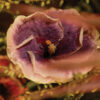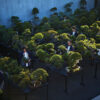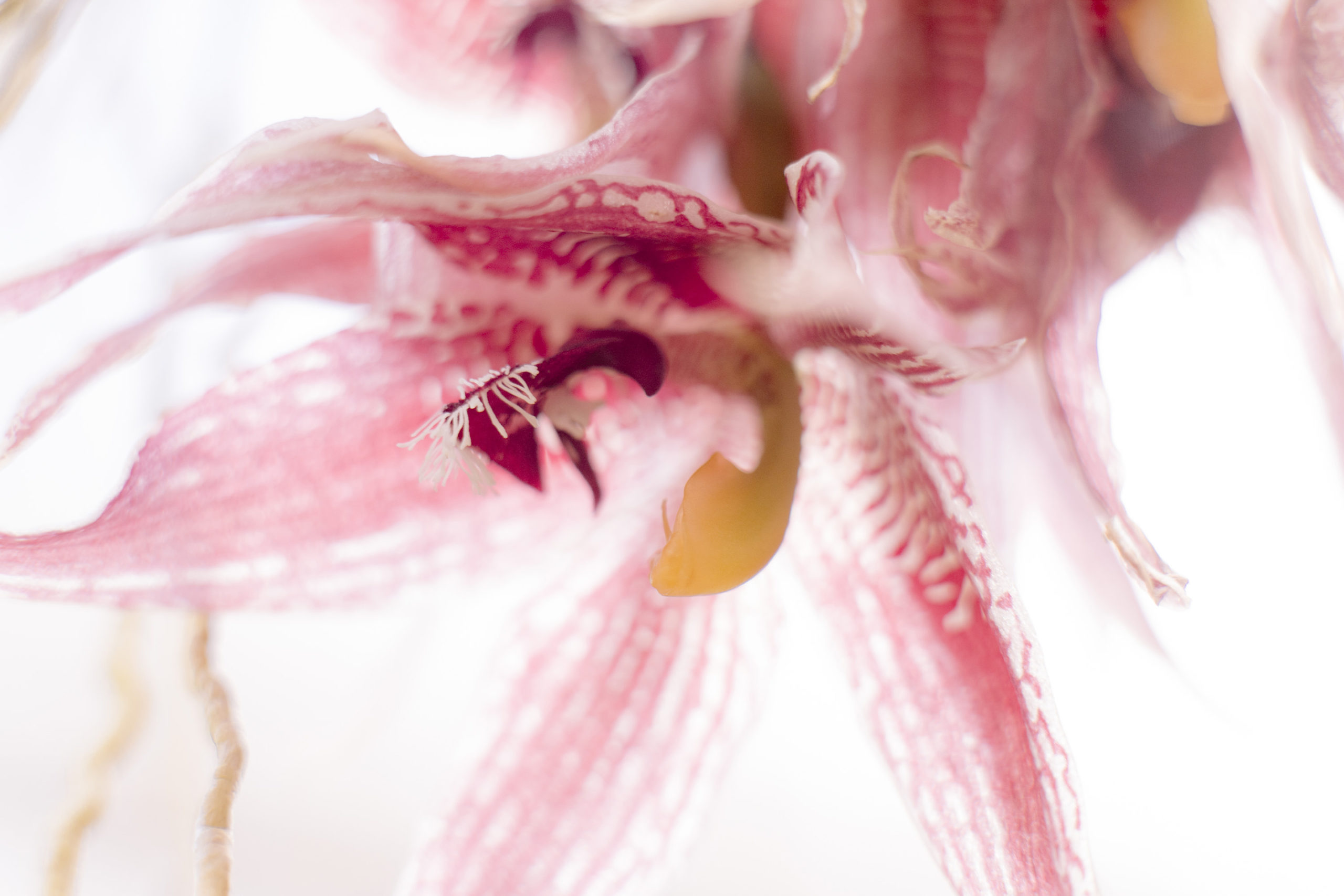Text by Martha Cheng
Images by Michelle Mishina
The third and most recent orchid that Adam Almeida won an award for was a Stanhopea tigrina. In their native habitat of Mexico, these plants drink the morning dew, and in the summer, they push out buds that look like alien eggs. Shimmery metallic blue orchid bees swarm the leopard-spotted blooms that burst from the buds and emit a pungent fragrance that Almeida likens to mothballs.
“It could be worse,” he tells me over Zoom, his digital background a single purple bloom that fills the screen and dwarfs his head. It is a Brassocattleya Patricia Leach Almeida, a hybrid bred by Roy Tokunaga at H&R Nurseries in Waimānalo. Tokunaga let Almeida, who used to work there, name the flower after his mother.
Naming orchids is a big deal—new ones are registered with the Royal Horticultural Society in England.
“With orchids, we have records going back to the first hybrids ever made in the 1800s,” Almeida says. “They are perfect records. You don’t find that kind of structure in botany very much.”
Nor do you find such diversity: H&R Nurseries alone has propagated or created almost 40,000 orchid varieties in its 40-year existence. Almeida, an orchid hobbyist, has around 500 species in his own backyard greenhouse.
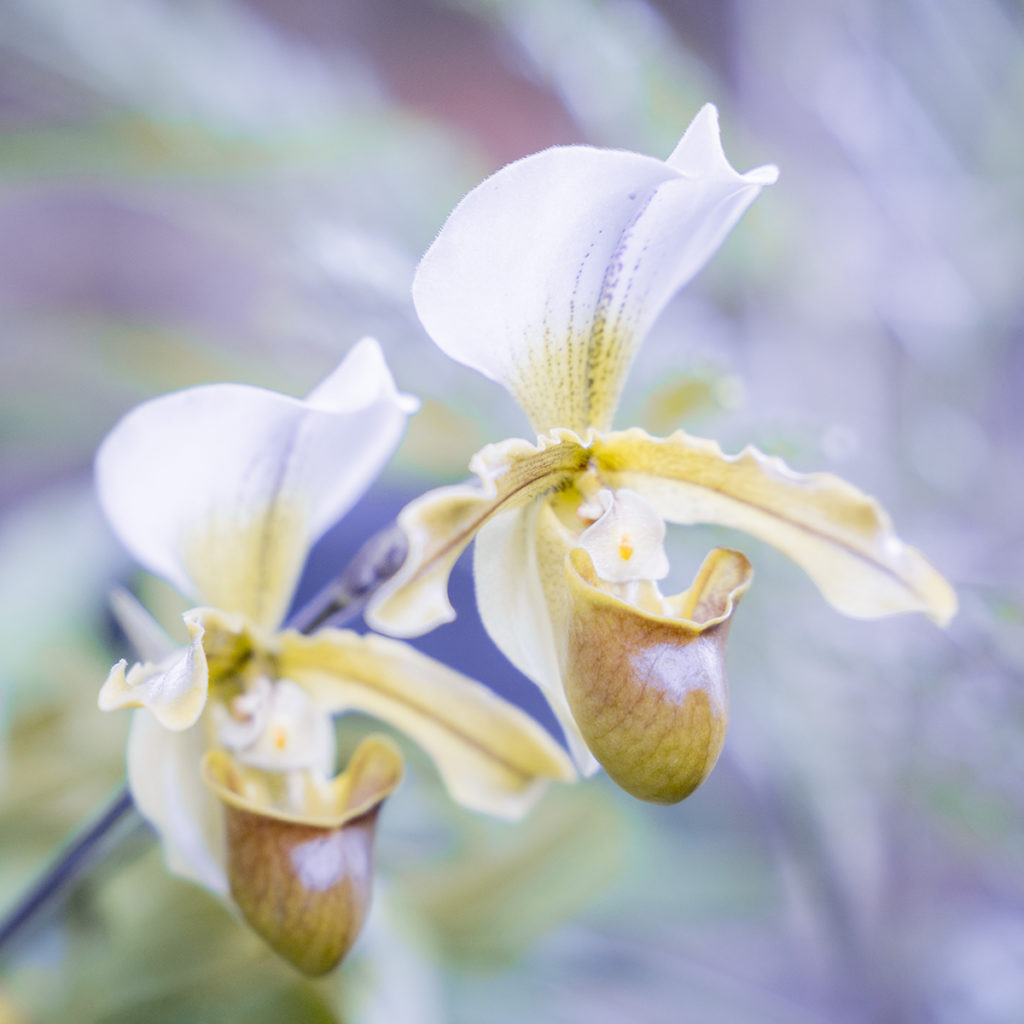
Hawai‘i was a world powerhouse for orchids in terms of quality
Adam Almeida
lmeida grew up around plants—his father was, for a time, even president of the Hawaiian Anthurium Society—and felt the pull of orchids.
“They’re some of the most unique and advanced plants around,” he says. “They inhabit every biome on earth, except for the tundra. There are so many species that have evolved and adapted to very specific conditions—other, less advanced plants don’t adapt to a specific environment, they adapt to a more broad ecology.”
He tells me of the Mexipedium xerophyticum, a variety of lady slipper orchid that has adapted to oases in the Mexican desert; “manipulative” Bulbophyllums with hinged landing pads that catapult pollinating insects into the flowers’ pollen; and the Rhizanthella slateri, which lives in the Australian desert and resembles “a subterranean worm from the movie Tremors,” breaking through the surface only once every four years and emerging with a disk of flowers.
At 25, he is the youngest member of the Honolulu Orchid Society, which was founded in 1939. This was about two decades before Hawai‘i became known as the Orchid Center of the World.
“Hawai‘i was a world powerhouse for orchids in terms of quality, from the post-World War II era to about the ’90s,” Almeida says. “Some of the first American orchid hybrids were made in Hawai‘i.”
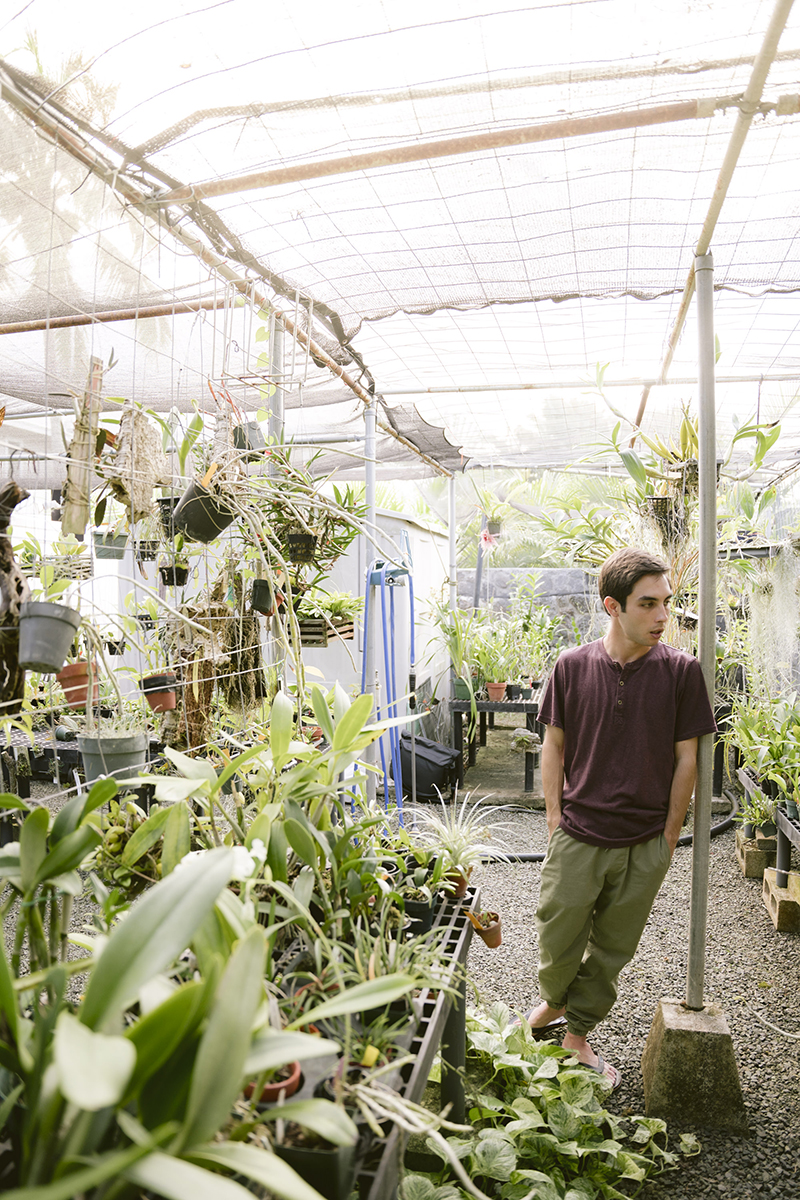
the youngest member of the Honolulu Orchid Society.
Hawai‘i orchidists have been so influential that three of the 24 American Orchid Society special annual awards are named after them: Ben Kodama and Masatoshi Miyamoto on O‘ahu and Roy Fukumura on Maui.
“A vast majority of cattleya hybrids that are made today can be traced back to Kodama’s nursery,” Almeida says.
H&R Nurseries is one of the few orchid nurseries in Hawai‘i continuing this legacy.
“We’re not rich, but we’re world famous,” says Harry Akagi, who started H&R Nurseries with Tokunaga in 1981.
For sale at H&R are about 150 different orchids of a variety that rival Lady Gaga’s wardrobe: almost-black blooms with brilliant magenta lips; plants that spew tiny, bright-red, lobster claw-shaped flowers; light blue orchids with dark blue shelves.
There are orchids with white ruffles and those with dark violet flounces, others with mahogany veins running through undulating light cream.
Orchid flowers are hardly ever subtle, especially not the bronzy orange flowers with two antler-like petals that spiral upwards, like streamers thrown on New Year’s Eve.
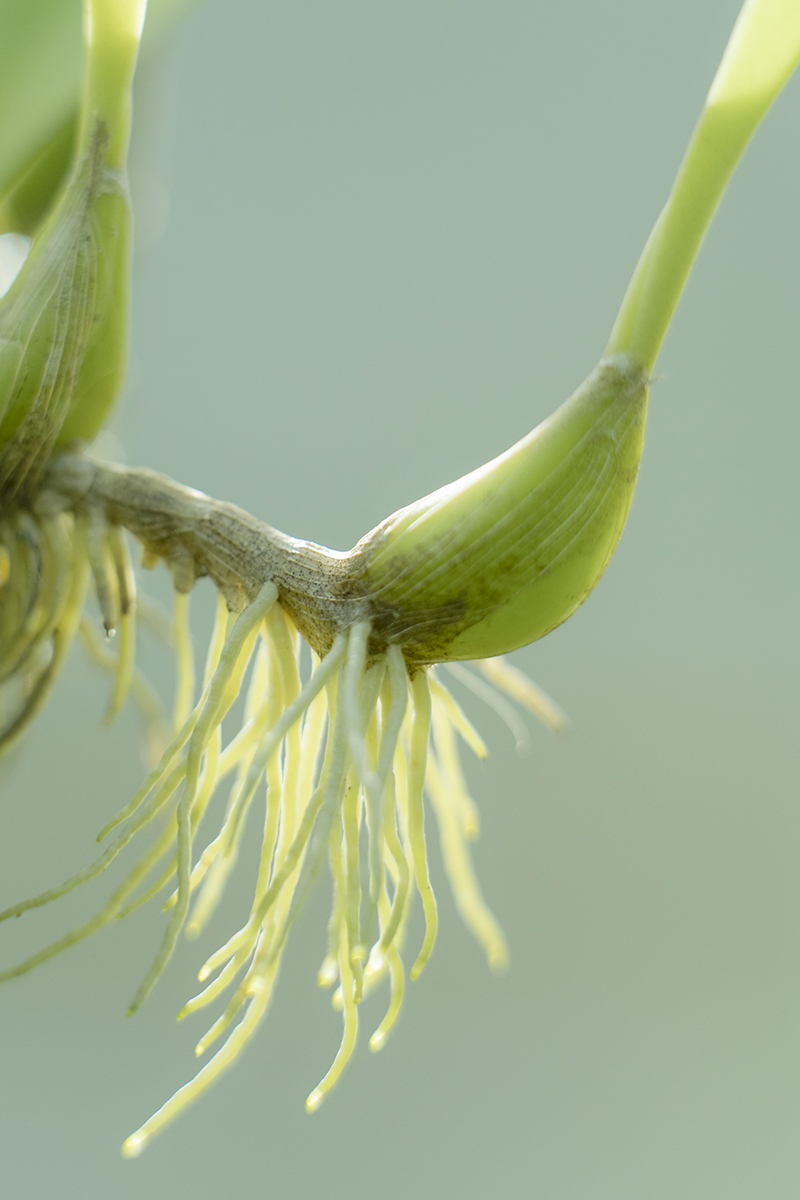
We’re not rich, but we’re world famous,
Harry Akagi of H&R Nurseries
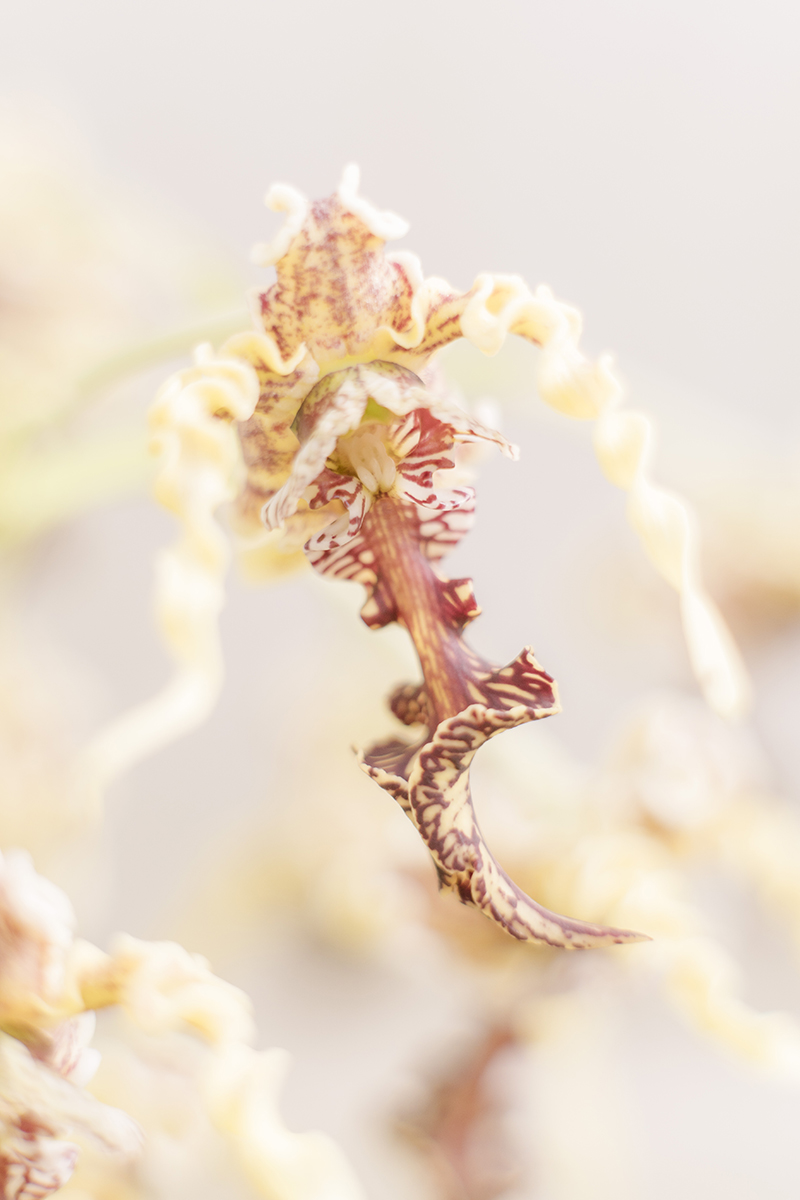
“People asked what our specialty is, and I tell them, our specialty is diversity,” Akagi says. “We do things that other people can’t do.” H&R started as an orchid lab, supplying growers around the world with plants.
But with foreign competition closing in and supplying materials for cheaper, Akagi realized they needed to start doing it all: the lab, the growing, the wholesaling, the retail. And they would focus on developing and growing particularly hard species.
“It didn’t make any sense to do the easy stuff,” he says, “because everybody in the world can do that.”
If orchids are the most seductive plant in the world—its name is derived from the Latin for testicle—you wouldn’t know it from talking to Akagi, who frames growing orchids as business more than beauty. But then, what is more seductive than money?
One day, Almeida hopes to grow orchids commercially. But for now, it’s a hobby, a way to propagate Hawai‘i’s orchid legacy, a way to celebrate diversity—what he sees in orchids, he sees in himself, as someone of Japanese, Portuguese, and Irish descent who has found his niche on O‘ahu. He has orchids that are almost his age and haven’t even bloomed yet.
He’s been named Honolulu Orchid Society’s orchidist of the year and is in no hurry for the orchidist of the decade honor. He has many, many more years of orchid-growing in him, he says.
Anticipation, too, is a supreme seducer.

